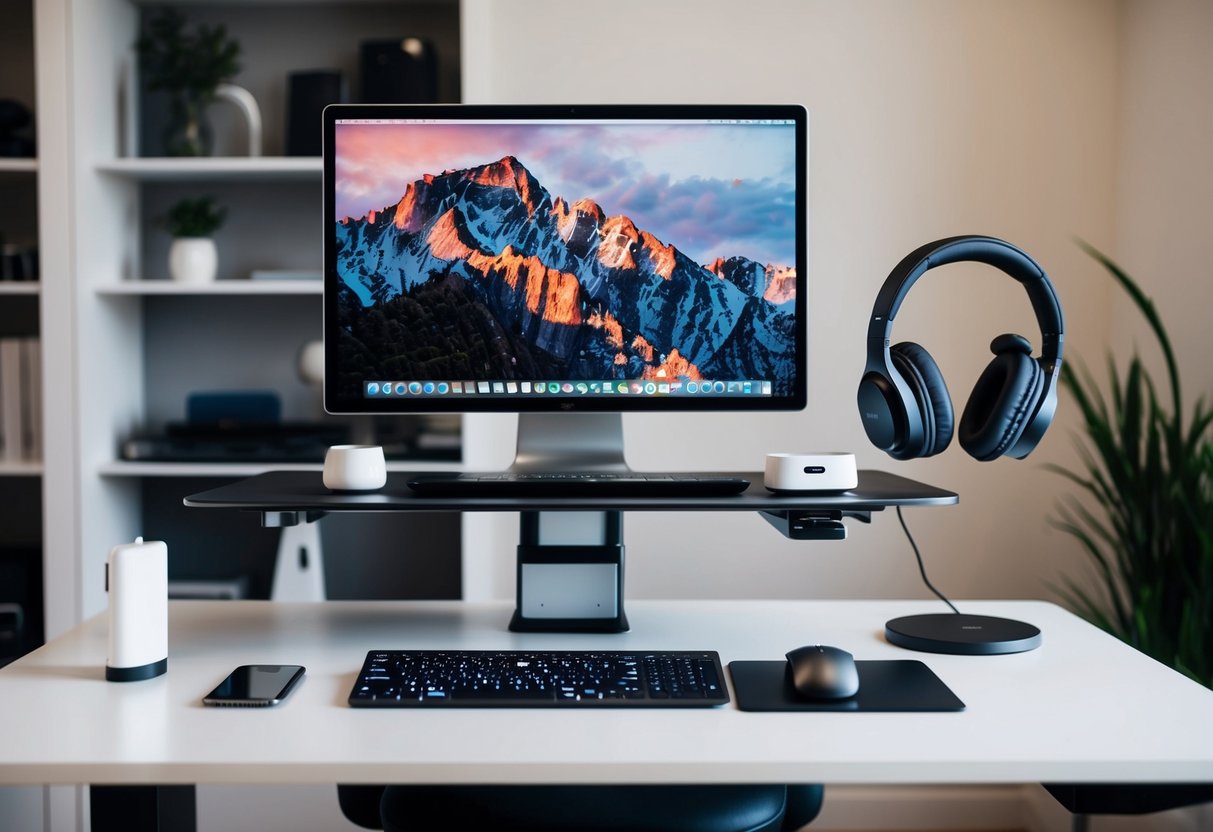Must-Have Tech Gadgets for Remote Work Efficiency
Customizing Your Workspace for Efficiency

Optimizing a workspace involves attention to ergonomics and the often overlooked aspect of cable management. Properly arranged equipment and organized cables can boost both comfort and productivity, minimizing unnecessary stress and distractions seen in many home offices.
The Ergonomics of Working from Home
Ergonomics play a vital role in creating an efficient workspace. Selecting the right chair is crucial; it should provide ample lumbar support. An adjustable chair allows for better alignment with the desk, reducing strain. Maintaining the correct monitor height is equally important, and it should align with eye level to avoid neck strain.
Desk layout further enhances ergonomics. Frequently used items like the keyboard and mouse should be within easy reach to prevent overextension. An ergonomic keyboard and mouse may further ease wrist strain. Proper lighting, preferably natural, minimizes eye strain, enhancing focus.
The Art of Cable Management
Efficient cable management not only keeps a workspace looking clean but also improves functionality. Labeling cables can save time when adjustments are necessary. Using cable ties or clips helps prevent tangling, reducing the risk of disconnections.
Routing cables along the underside of the desk keeps them out of sight, which can enhance both aesthetics and working conditions. Power strips mounted strategically make all outlets accessible without a tangled mess, promoting a more organized environment. Attention to cable management reworks a cluttered office into a streamlined workspace, benefiting daily efficiency.
Communication Tools for Effective Collaboration

Effective communication is vital for remote work, ensuring teams stay connected and productive. Essential tools for achieving this include reliable instant messaging for quick interactions and video conferencing solutions to facilitate impactful meetings.
Instant Messaging and File Sharing
Instant messaging platforms are fundamental for seamless remote work. They allow team members to exchange information quickly, simulating in-office discussions. Applications such as Slack or Microsoft Teams offer robust features like chat channels and direct messaging. These platforms often integrate with file-sharing services, making document access straightforward.
The ability to share files instantly enhances collaboration, ensuring everyone has the most current versions of documents. It minimizes email dependency, streamlining workflow processes. This immediacy helps teams to act swiftly and maintain momentum throughout their projects.
Conducting Impactful Video Meetings
Video conferencing tools have become indispensable for remote work. They provide a critical platform for hosting virtual meetings, enabling face-to-face interactions despite physical distances. Popular options include Zoom, Google Meet, and Microsoft Teams, each offering features like screen sharing and virtual backgrounds.
These tools foster an inclusive environment where participants can contribute equally. Features such as breakout rooms encourage small group discussions, enhancing the quality of decision-making. By combining video, audio, and screen sharing, team members can effectively collaborate, ensuring clarity and focus during meetings.



